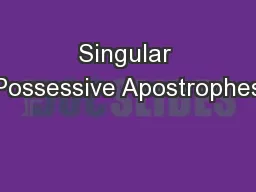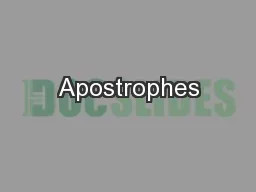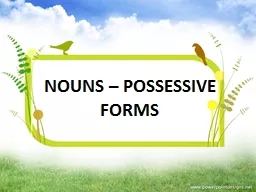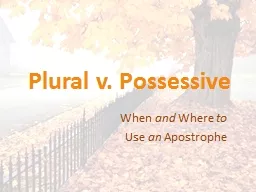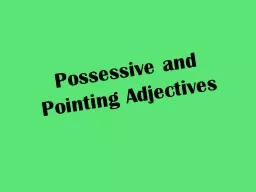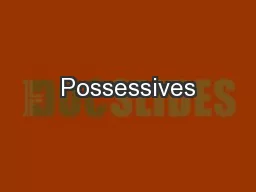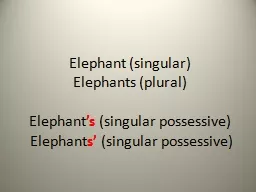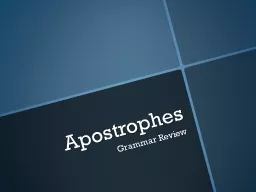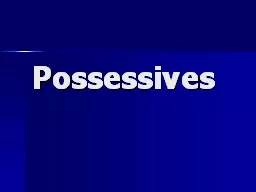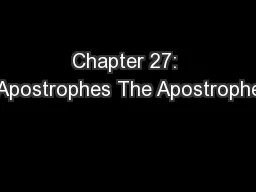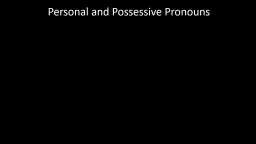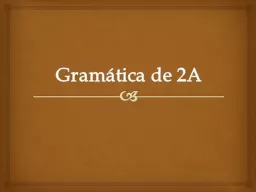PPT-Singular Possessive Apostrophes
Author : tatyana-admore | Published Date : 2015-12-01
By Brianna Brock and Sam Ramos Grammar Matters Heres a quick lesson What is Singular The word singular denotes a quantity of one Singular contrasts with plural
Presentation Embed Code
Download Presentation
Download Presentation The PPT/PDF document "Singular Possessive Apostrophes" is the property of its rightful owner. Permission is granted to download and print the materials on this website for personal, non-commercial use only, and to display it on your personal computer provided you do not modify the materials and that you retain all copyright notices contained in the materials. By downloading content from our website, you accept the terms of this agreement.
Singular Possessive Apostrophes: Transcript
Download Rules Of Document
"Singular Possessive Apostrophes"The content belongs to its owner. You may download and print it for personal use, without modification, and keep all copyright notices. By downloading, you agree to these terms.
Related Documents

